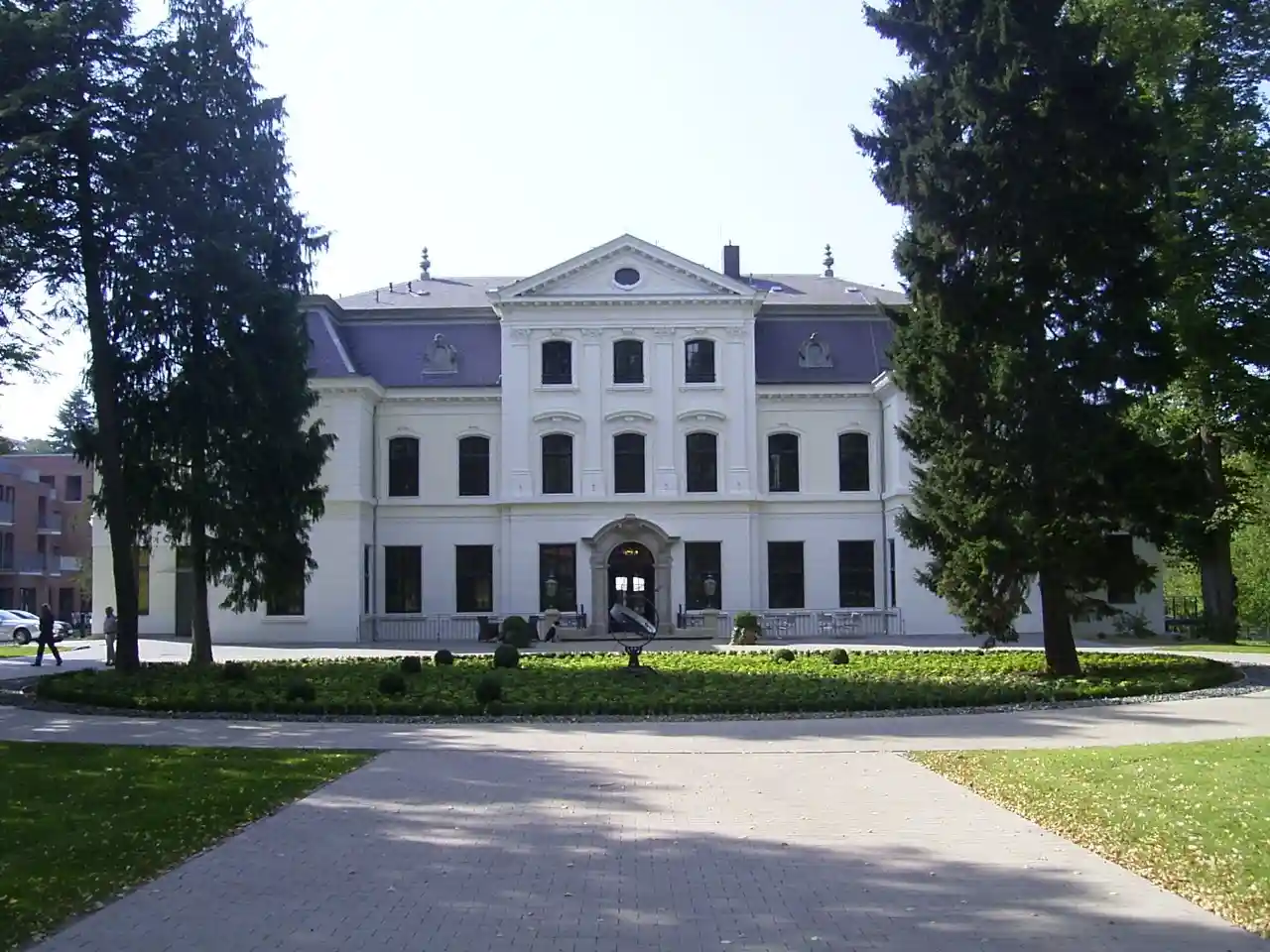 Wellingsbüttel Manor - Credit: Wikimedia Commons
Wellingsbüttel Manor - Credit: Wikimedia Commons
 Wellingsbüttel Manor - Credit: Wikimedia Commons
Wellingsbüttel Manor - Credit: Wikimedia Commons
Wellingsbüttel Manor (German: Rittergut Wellingsbüttel, since Danish times: Kanzleigut Wellingsbüttel) is a former manor with a baroque manor house (German: Herrenhaus) in Hamburg, Germany, which once enjoyed imperial immediacy (Reichsfreiheit).Fiege, Geschichte Wellingsbüttels - Vom holsteinischen Dorf und Gut zum hamburgischen Stadtteil, Neumünster 1982, p. 25 Wellingsbüttel was documented for the first time on 10 October 1296.Rackowitz, Dorothee, und Caspar von Baudissin, 700 Jahre Wellingsbüttel 1296–1996, Hamburg 1993, p. 22 Since 1937 it has formed part of the suburbs of Hamburg as the heart of the quarter of the same name, Wellingsbüttel, in the borough of Wandsbek. The owners of Wellingsbüttel Manor from the beginning of the 15th until the early 19th century were consecutivelyFiege, Geschichte, pages 17, 25, 27, 69, 81 and 83 the Archbishops of Bremen, Heinrich Rantzau, Dietrich von Reinking,:de:Dietrich Reinking the Barons von Kurtzrock,For Kurtzrock genealogy see: Ernst Heinrich Kneschke, Neues allgemeines Deutsches Adels-Lexicon, Volume 5, 1864, p. 337 Frederick VI of Denmark, Hercules Roß,A Hamburg relative of Hercules Ross, presumably a nephew, son of his brother Colin the Jauch family, Cäcilie BehrensFor the banking family Behrens see: Frank von Freytag-Loringhoven, 175 Jahre L. Behrens & Söhne Hamburg 1780-1955, 1955; Morten Reitmayer, Bankiers im Kaiserreich: Sozialprofil und Habitus der deutschen Hochfinanz, volume 136 of Kritische Studien zur Geschichtswissenschaft, 1999; Ingo Köhler, Die "Arisierung" der Privatbanken im Dritten Reich: Verdrängung, Ausschaltung und die Frage der Wiedergutmachung, volume 14 of Schriftenreihe zur Zeitschrift für Unternehmensgeschichte, 2005, p. 287 and Otto Jonathan Hübbe. In the early 19th century it was the residence and place of death of Friedrich Karl Ludwig, Duke of Schleswig-Holstein-Sonderburg-Beck, the penultimate duke,Fiege, Geschichte, p. 64 who was an ancestor inter alia of the present-day British royal family. Wellingsbüttel Manor was elevated to the status of a Danish "chancellery manor" (Kanzleigut).Burkhard von Hennigs, Güter in Stormarn, in: Johannes Spallek (editor),Jahrbuch für den Kreis Stormarn 2005, Ahrensburg 2004, It was then acquired by Grand Burgher of the Free and Hanseatic City of Hamburg Johann Christian Jauch junior (1802–1880), becoming a country estate of the Jauch family.Fiege, Geschichte, p. 69; Fiege, Hartwig, Über die Wellingsbütteler Gutsbesitzerfamilie Jauch in: Jahrbuch des Alstervereins 1984, Hamburg 1984; Natalie Bombeck, Jauchs Vorfahren waren Wellingsbütteler, in: Hamburger Abendblatt 25 January 2007 The manor house is together with Jenisch House (Jenisch-Haus) one of Hamburg's best conserved examples of the Hanseatic lifestyle in the 19th century and jointly with the manor gatehouse a listed historical monument. The estate is located on the banks of the Alster River in the middle of the Alster valley (Alstertal) nature reserve. Read more on Wikipedia
Source: en.wikipedia.org